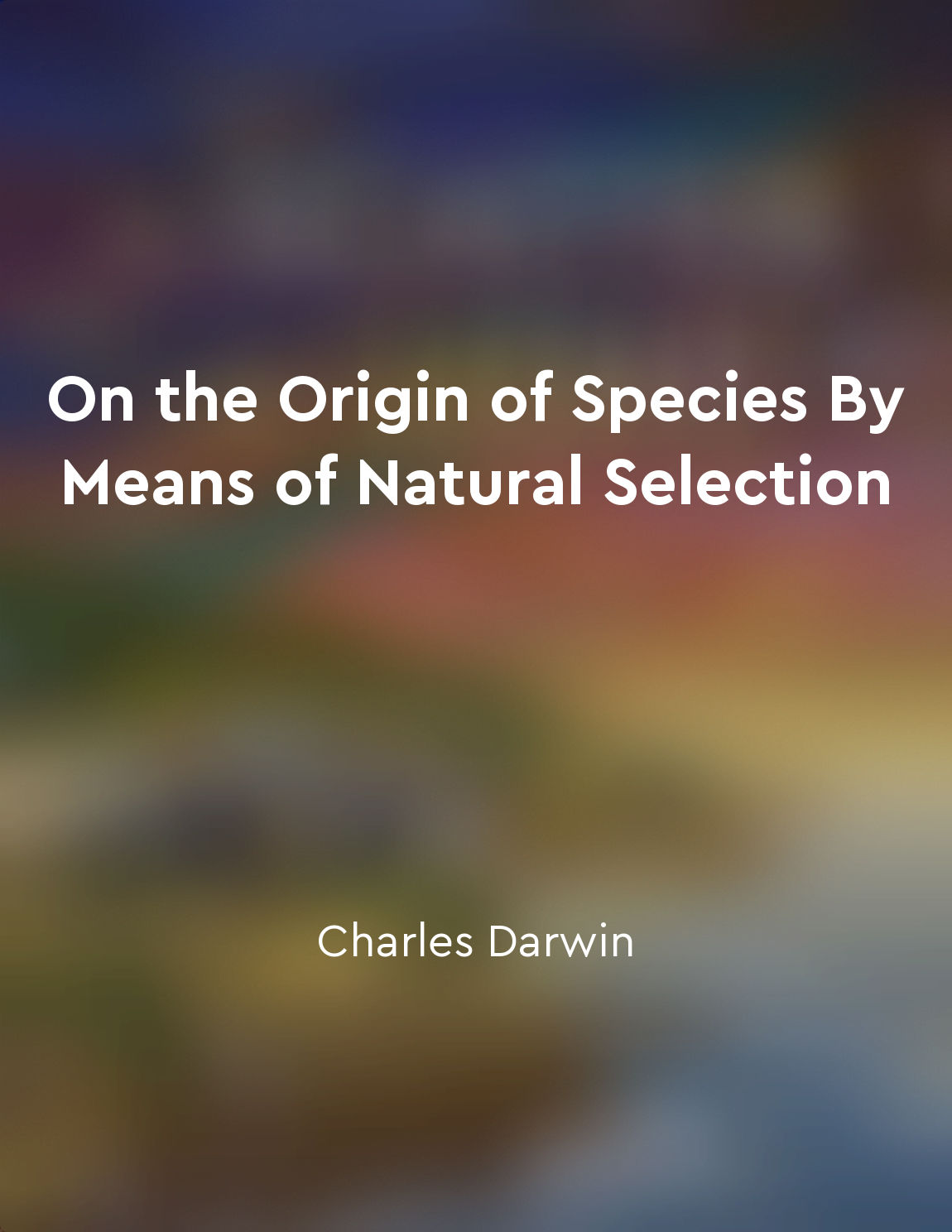Continued evolution in response to changing environments from "summary" of On the Origin of Species By Means of Natural Selection by Charles Darwin
The process of evolution is not a fixed or static phenomenon, but rather a continuous and dynamic one that is inextricably linked to the ever-changing environments in which organisms find themselves. As environments change over time, organisms must adapt in order to survive and reproduce successfully. This process of adaptation is driven by natural selection, whereby those individuals with traits that are better suited to the new environmental conditions are more likely to survive and pass on their genes to the next generation. In essence, evolution is a response to changing environments, as organisms that are unable to adapt to new challenges are at a greater risk of extinction. This is because the environment acts as a selective pressure, favoring those individuals that possess traits that confer a survival advantage. Over time, this process of natural selection leads to the accumulation of beneficial traits within a population, resulting in the gradual evolution of new species. The concept of continued evolution in response to changing environments is central to understanding the diversity of life on Earth. It explains how organisms have been able to adapt to a wide range of environmental conditions, from the extreme heat of the desert to the freezing cold of the arctic. It also highlights the interconnectedness of all living things, as changes in one species can have far-reaching effects on others in the ecosystem.- We can gain valuable insights into the mechanisms of evolution and the forces that drive it. This knowledge is crucial for understanding how life on Earth has evolved over millions of years, and how it may continue to change in the future as environmental conditions shift. Ultimately, the concept of continued evolution in response to changing environments underscores the remarkable adaptability of life and its ability to persist in the face of adversity.
Similar Posts
Embracing diversity enriches communities and ecosystems
Diversity is not just a buzzword; it is an essential ingredient for the vitality and resilience of communities and ecosystems. ...
Kin selection explains altruistic behaviors towards relatives
In the natural world, organisms often exhibit altruistic behaviors towards their relatives. This seemingly selfless behavior ca...

Gradualism in evolutionary processes
The process of evolution, as observed in the natural world, is characterized by a gradual change over time. This gradualism is ...

Adaptations reflect the functional fit between organisms and their environments
The relationship between organisms and their environments is a key aspect of the study of adaptation. It is through this relati...

Evolution as unifying theory in biology
The theory of evolution serves as the unifying principle in the field of biology. It provides a framework through which we can ...
The structure of living things
Living things are built with a remarkable structure that is both intricate and functional. This structure allows them to carry ...
The concept of heredity and its implications
The concept of heredity is one of great importance in understanding the nature of living organisms. It is through heredity that...

Extinction of less adapted species
The process of natural selection inevitably leads to the extinction of less adapted species. As new and better-adapted species ...

Religion can hinder scientific progress
Religion has the potential to impede scientific progress in a variety of ways. One such way is by promoting dogma and faith ove...
Natural selection is a blind and indifferent process
Natural selection is a blind and indifferent process, devoid of any intention or foresight. It does not have a goal or purpose ...

